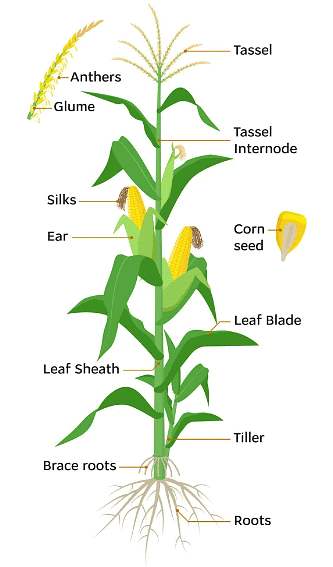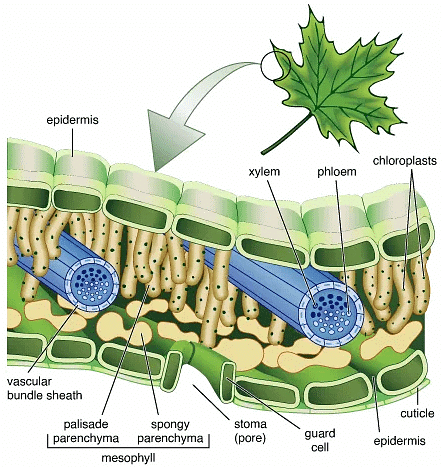JAMB Exam > JAMB Notes > Biology for JAMB > Angiosperms- Monocots and Dicots
Angiosperms- Monocots and Dicots | Biology for JAMB PDF Download
Introduction
Angiosperms are a group of flowering plants that produce seeds enclosed within a protective structure called a fruit. They are the most diverse and dominant group of plants on Earth, with over 300,000 known species. Angiosperms play a crucial role in ecosystems, providing food, medicine, shelter, and aesthetic beauty.
Structure of Monocots (Maize):
- Roots: Monocots have fibrous roots that form a dense network of thin, branching roots. These roots are mainly responsible for anchoring the plant and absorbing water and nutrients from the soil.
- Stems: The stem of a maize plant is composed of long, hollow internodes connected by nodes. Each node gives rise to leaves and lateral roots. The stem provides support and transports water, minerals, and sugars throughout the plant.
- Leaves: Maize leaves are long and narrow with parallel veins. They are arranged alternately along the stem. The leaves capture sunlight for photosynthesis and play a vital role in the production of carbohydrates.
- Flowers: Maize flowers are unisexual, meaning they have separate male and female flowers on the same plant. The male flowers are borne in tassel-like structures called the staminate inflorescence, while the female flowers are found in the ear, which develops into a cob of corn.
- Seeds: The seeds of maize are enclosed within the cob. Each seed consists of a protective seed coat, an embryo, and a storage tissue called the endosperm. The endosperm provides nourishment for the developing embryo.

Structure of Dicots (Water Leaf)
- Roots: Dicots generally have a taproot system, consisting of a main root that grows vertically downwards and gives rise to lateral roots. The taproot system provides strong anchorage and efficient water absorption.
- Stems: The stem of a water leaf plant is typically woody and possesses secondary growth, resulting in an increase in girth over time. It provides support and houses the vascular tissues responsible for the transport of water, nutrients, and sugars.

- Leaves: Water leaf leaves are usually broad and have a reticulate or net-like venation pattern. They are arranged in an alternate or opposite fashion along the stem. The leaves are important for photosynthesis, gas exchange, and transpiration.
- Flowers: Water leaf produces flowers that are typically pentamerous (in multiples of five) and have both male and female reproductive organs. The flowers are often colorful and attract pollinators. After fertilization, the ovary develops into a fruit that contains the seeds.
- Seeds: The seeds of water leaf are enclosed within the fruit, which may have various forms such as berries or capsules. The seeds consist of a protective seed coat, an embryo, and often contain a nutrient-rich endosperm that supports seed germination and early growth.
The document Angiosperms- Monocots and Dicots | Biology for JAMB is a part of the JAMB Course Biology for JAMB.
All you need of JAMB at this link: JAMB
|
225 videos|175 docs|156 tests
|
Related Searches





















